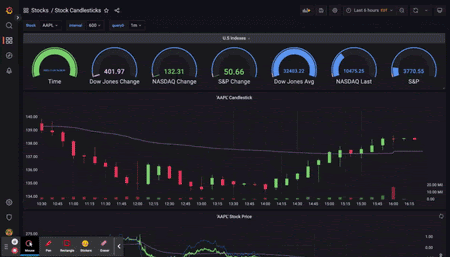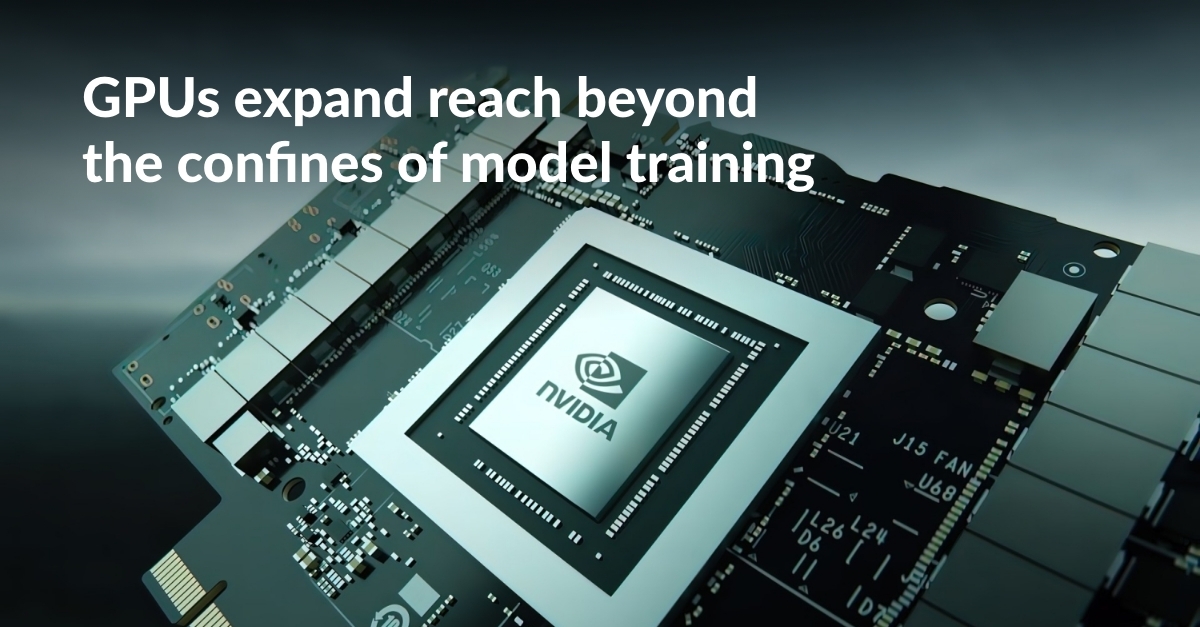In the rapidly evolving landscape of data analytics and artificial intelligence, one technology has emerged as a game-changer: Graphics Processing Units (GPUs). Traditionally known in the data science community for their role in accelerating AI model training, GPUs have expanded their reach beyond the confines of deep learning algorithms. The result? A transformation in the world of data analytics, enabling a diverse range of analytic workloads that extend far beyond AI model training.
The Rise of GPUs in AI
GPUs, originally designed for rendering images and graphics in video games, found a new purpose when AI researchers realized their parallel processing capabilities could be harnessed for training complex neural networks. This marked the dawn of the AI revolution, as GPUs sped up training times from weeks to mere hours, making it feasible to train large-scale models on massive datasets. Deep learning and generative AI, both subsets of AI, rapidly became synonymous with GPU utilization due to the technology’s ability to handle the intensive matrix calculations involved in neural network training.
Beyond Model Training: A Paradigm Shift in Data Analytics
While GPUs revolutionized AI model training, their potential was not confined to this singular role. The parallel processing architecture that made GPUs so efficient for matrix computations in neural networks turned out to be highly adaptable to a variety of data analytic tasks. Turns out time-series, geospatial, and pretty much any analytic that involves aggregations benefit from matrix computations rather than serial computations. This realization marked a paradigm shift in data analytics, as organizations began to explore the broader capabilities of GPUs beyond the boundaries of deep learning.
GPUs enable vectorization – a computing technique that processes multiple data elements simultaneously. Instead of processing one data element at a time, vectorized instructions operate on arrays or vectors of data, executing the same operation on each element in parallel. This approach enhances processing efficiency by minimizing the need for iterative or scalar computations, resulting in significant performance gains for tasks such as mathematical calculations and data manipulations.
The Diverse Landscape of Data Analytic Workloads
As businesses recognized the efficiency and speed benefits of GPUs, they started applying them to a wide range of data analytic workloads. These workloads span various industries and use cases:
Real-Time Analytics
In today’s fast-paced business environment, real-time insights hold immense value. However, traditional CPU-based analytics often struggle to meet the demand for instantaneous results, leaving decision-makers lagging behind. This is where GPUs emerge to close the gap. With their exceptional parallel processing capabilities, GPUs are a force-multiplier on top of traditional distributed processing, enabling organizations to swiftly analyze data in real time. GPUs transcend the traditional trade-off between speed and metric sophistication; empowering organizations to achieve near-real-time insights even for highly complex calculations (figure 1). This advancement enables businesses to make better decisions faster, leading to enhanced outcomes and a deeper understanding of intricate data patterns that were previously challenging to analyze swiftly. An example of an early adopter is NORAD – The US Air Force who needed detect increasingly hard to discover threats in North American airspaces as fast as possible.

Geospatial Analytics
The proliferation of spatial data has surged due to the abundance of location-enriched sensor readings, driving a transformative shift in how industries harness and analyze geospatial information. Industries reliant on geospatial data, such as logistics, telecommunications, automotive, defense, urban planning, and agriculture, face the complex challenge of analyzing vast datasets with intricate spatial relationships. Traditional CPU-based methods struggle to handle the complex joins between points and polygons, as well as polygons to polygons, often leading to incredibly sluggish performance.
GPUs not only fuse massive geospatial datasets with remarkable speed but also excel at intricate spatial calculations, such as proximity, intersections, and spatial aggregations. GPU-based architectures gracefully handle spatial joins and complex geometry functions due to their ability to perform operations on entire arrays or sequences of data elements simultaneously. Spatial joins involve comparing and combining large sets of spatial data, a task perfectly suited for GPUs’ simultaneous processing of multiple data points. Additionally, GPUs’ high memory bandwidth efficiently handles the data movement required in geometry functions, enabling faster manipulation of complex spatial structures
An early adopter was T-Mobile, who said, “We had geospatial workloads supporting network gap analysis that could take months or even years to complete on the previous data stack.”

Time-Series Analytics
Time-series analytics, a cornerstone of industries like finance, healthcare, and manufacturing, finds a new dimension with the integration of Graphics Processing Units (GPUs). GPUs catapult time-series analysis to unprecedented levels of speed and sophistication, adeptly handling the high cardinality data that is typical in these scenarios.
High cardinality refers to a situation where a dataset has a large number of distinct values in a particular column or attribute. In time-series analysis, high cardinality often arises because of timestamp or identifier fields, where each entry represents a unique time point or event. CPUs struggle with high cardinality joins because traditional CPU architectures process data sequentially, leading to significant overhead when performing operations involving large sets of distinct values. Joining datasets with high cardinality on CPUs requires extensive memory access and complex processing, which can result in performance bottlenecks and slower query execution times.
By swiftly crunching through intricate temporal data, GPUs uncover hidden patterns, empower accurate forecasting, and provide real-time insights on constantly changing readings. Early adopters like Citibank have been using GPUs to create more advanced and timely metrics used in transaction cost analysis as part of their real-time trading platform.
Language to SQL
Language-to-SQL (Structured Query Language) models are revolutionizing database interactions by enabling users to formulate complex database queries using natural language. These Language Model-based systems (LLMs) leverage advanced AI techniques to understand and translate human language into precise SQL commands. GPUs are not only used to build these LLMs, but they also play a pivotal role in accelerating the model’s training and inference processes. The parallel processing power of GPUs allows these LLMs to process large amounts of data more quickly, making the language-to-SQL conversion faster and more responsive, thus improving the user experience and expanding the range of practical applications for these systems.
While this capability is still new, leading healthcare, automotive, and airline companies are starting to pilot this capability on their proprietary data.

Kinetica: Harnessing GPU Power for Diverse Workloads
Kinetica was designed and built from the ground up to leverage NVIDIA GPUs to accelerate this wide range of analytics. Kinetica’s GPU-accelerated analytics not only enhance the speed of analysis but also enable users to derive insights from data in ways that were previously infeasible due to computational limitations.
By leveraging GPUs as the original design principle, Kinetica accelerates complex computations, enabling organizations to process and analyze massive datasets with unprecedented velocity. What sets Kinetica apart is not only native use of GPU acceleration but also its comprehensive suite of enterprise-grade features. Unlike other GPU databases, Kinetica stands out as a fully distributed platform that seamlessly integrates critical features such as high availability, cell level security, tiered storage, Postgres wireline compatibility, and advanced query optimization. This unique combination positions Kinetica as the go-to solution for enterprises seeking unparalleled speed, scalability, and reliability in their data analytics initiatives. The platform’s ability to seamlessly integrate with existing data ecosystems means organizations can leverage their existing data investments fully and minimize data movement.
Kinetica achieved a pioneering milestone by being the first analytic database to integrate a Language Model-based system for SQL, seamlessly blending the power of AI-driven language understanding with robust data analytics capabilities.
The evolution of GPUs from AI model training to a versatile data analytics workhorse is changing the landscape of industries worldwide. As organizations continue to explore the potential of GPUs, we can expect to see innovative solutions that solve complex problems in ways we never imagined. The journey of GPUs from AI model training to a cornerstone of data analytics is a testament to their adaptability and potential.

